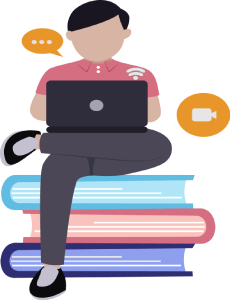A Simple Guide to Formal and Informal Learning
Learning isn’t limited to classrooms, textbooks, or formal courses. It happens around us every day—in conversations while solving problems, exploring new hobbies, or even making mistakes. As humans, we constantly take in new ideas, skills, and behaviours, often without even realizing it. Understanding how we learn can help us take control of our personal and professional growth. There are two main ways we pick up knowledge: through formal learning and informal learning. Both have their place, and both shape who we become.
What Are Formal and Informal Learning

The paths to knowledge and skills are two different paths: formal and informal learning. Formal learning is rigidly structured. Learning occurs in avenues such as schools, colleges, universities, and other training centres. Everything is planned and organized. You are taught by a teacher or trainer and are supposed to receive a certificate or qualification for completion. You study as per some syllabus and sit through tests measuring your progress in grades or scores.
Informal learning is pretty much the opposite. It is unplanned and happens naturally; it does not follow any official course outline. It would be like learning to change tyres by helping someone fix a car or figuring out how to edit photos by experimenting on your phone. Such informal learning often happens within home or work environs, through hobbies, or simply through life experiences. There is no classroom, no examination, or even a teacher to instruct you on what to do; however, what you learn indeed could be as valuable as anything taught explicitly in a formal setting.
How These Two Types of Learning Work Together
Formal and informal learning can work side by side. They don’t have to be separate or seen as competing. Often, what we learn formally is just the beginning. A person might study the basics of a subject in school but truly understand it by using it in real life. For example, someone who learns about communication in a classroom might really develop that skill through group work, team sports, or customer service jobs.
Mixing both forms of learning gives people a better chance to understand not just the “what” but also the “how” and “why.” Formal learning helps you gain facts and structure, while informal learning helps you apply that knowledge in flexible, creative, and practical ways. Together, they create a stronger, more well-rounded approach to learning.
Why Informal Learning Is Often Overlooked
Because informal learning isn’t tested or certified, people often forget how important it is. But most of our everyday skills—like listening, planning, solving problems, and even managing our emotions—are learned informally. Think about how many things you’ve learned just by trying, failing, watching others, or figuring things out as you go. That’s informal learning in action.
It’s also continuous. Formal learning usually ends at some point—when you graduate or finish a course. But informal learning goes on for life. It keeps us sharp, helps us adjust to change, and supports personal growth in ways formal education can’t always reach. It might not show up on a diploma, but informal learning plays a huge part in how capable and confident we become.
Why Recognizing Both Kinds of Learning Matters
When we recognize both formal and informal learning, we gain a more complete picture of what someone knows and can do. This is especially important in workplaces. Some people may not have degrees, but they have years of hands-on experience that taught them just as much, if not more. Employers who understand this are more likely to value diverse skills and offer fair opportunities.
The same goes for educators. When teachers support informal learning—like encouraging self-study, curiosity, and group collaboration—students tend to stay more engaged and learn in ways that feel meaningful to them. And for individuals, knowing that learning isn’t limited to books or classrooms helps build confidence and motivation. It reminds us that every moment, every job, every mistake is a chance to learn something new.
Keep Learning, Wherever You Are
The best kind of learning doesn’t always happen at a desk. It happens in conversation, in problem-solving, in trying new things. By mixing formal and informal learning, we can grow in both knowledge and experience. Whether you’re studying for a qualification or learning something by doing it yourself, both paths matter. And the more we understand that, the more open and capable we become—not just as students or workers, but as people.
Related Articles:
Schools around the world are experimenting with AI tutors, adaptive learning modules, and automated grading systems.
— Artificial Superintelligence Alliance (@ASI_Alliance) February 11, 2025
Is this the dawn of personalized education or a step toward isolating students behind screens? 1/5 pic.twitter.com/YF4PubHjxy
